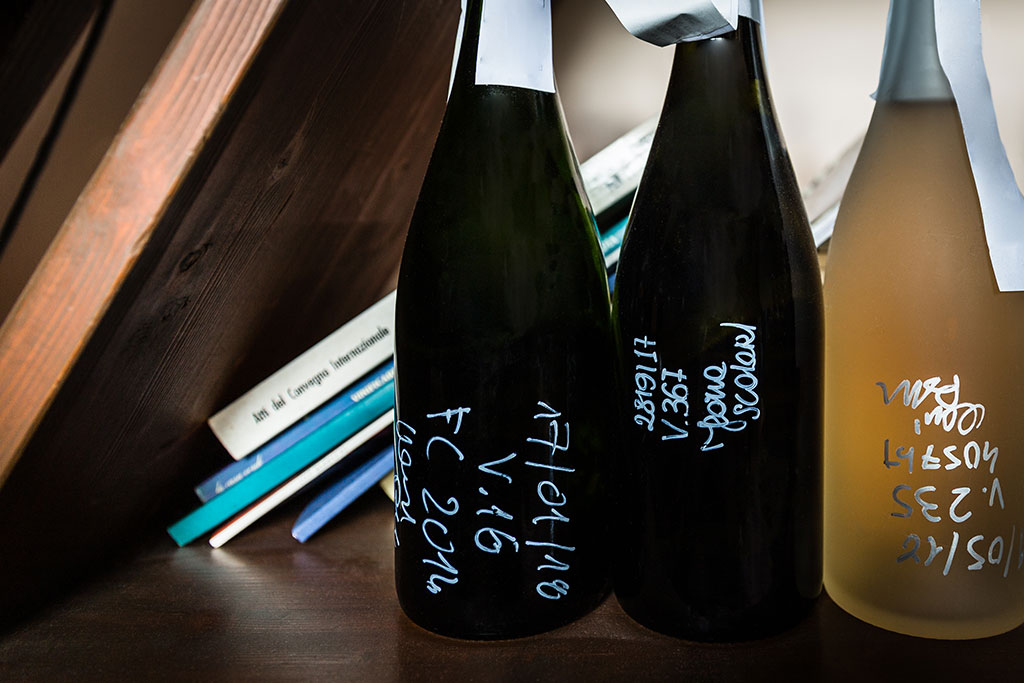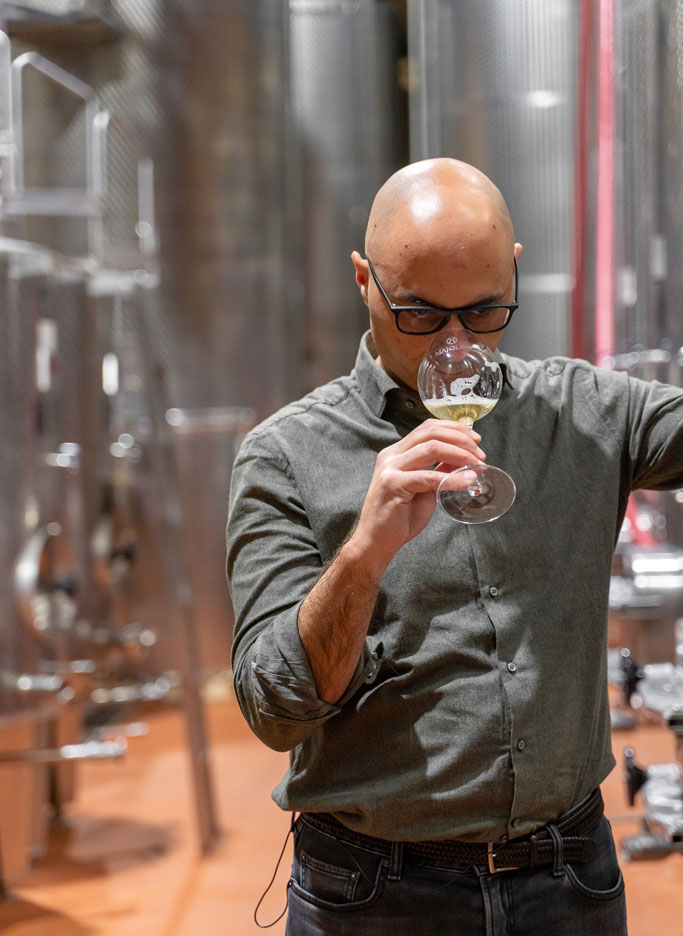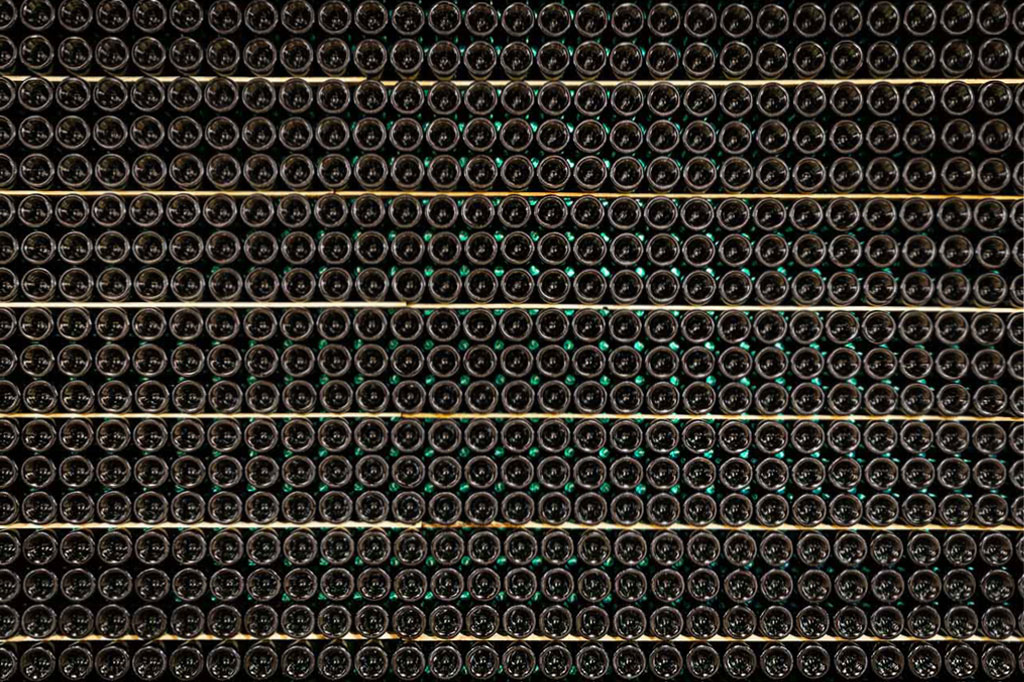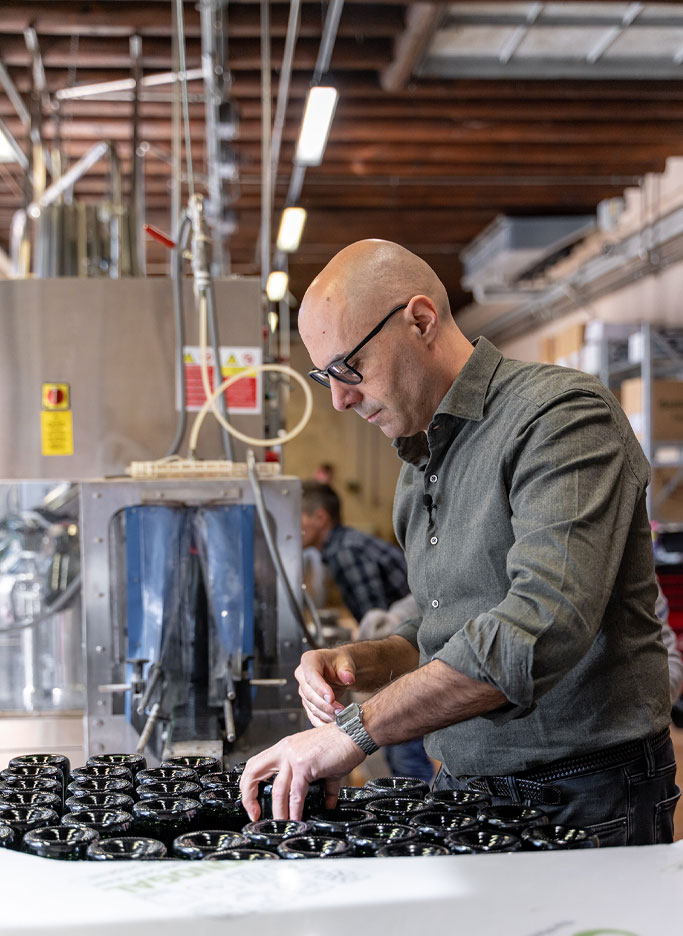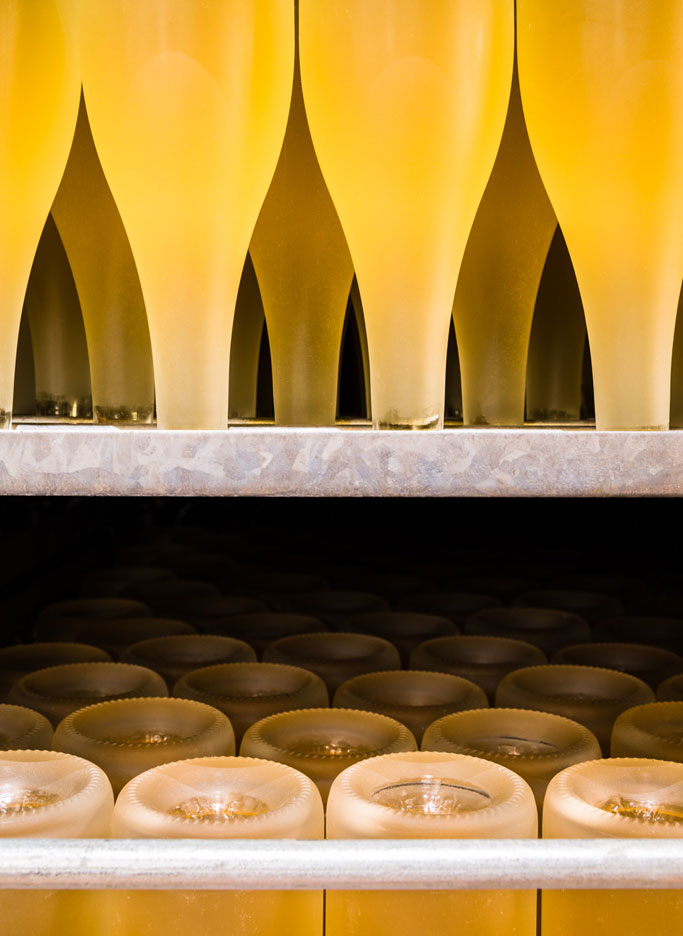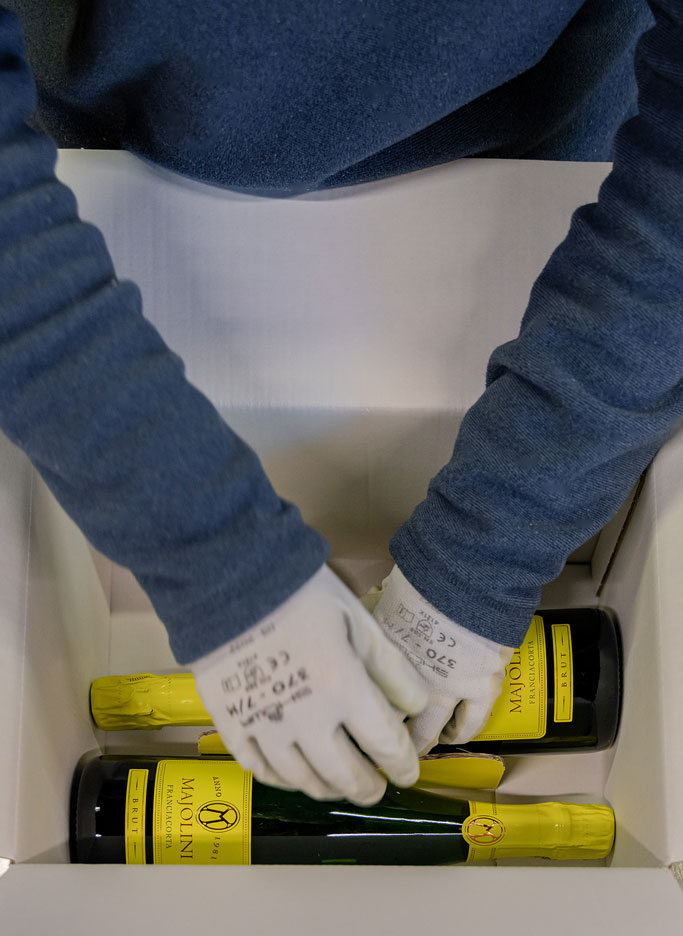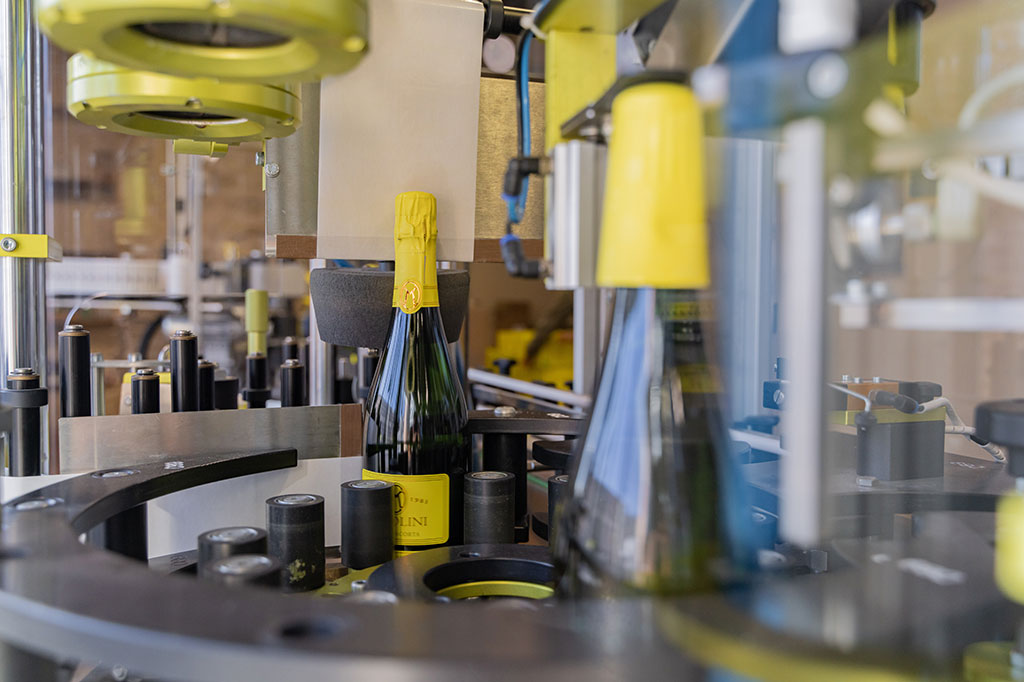“The cuvée is one of the most poetic parts of the whole production cycle as the tasting profile is “drawn” using the art of experience.
Understanding the cuveé
The spring following the grape harvest, the “Franciacorta base” is chosen on the basis of thorough tasting sessions by professional palates. The aim of these sessions is to determine the profile that each winery will give to its cuvée. This is an extremely important moment in the wine-making process, What makes the difference is expert knowledge, the tasting skills of a “palate that sees and feels” and, as ever, a passion for listening to something yet to be born. The cuvée is one of the most poetic parts of the whole production cycle as the tasting profile is “drawn” using the art of experience.
Bottling
The tirage process involves adding a solution of sugar and yeast to the wine, which is immediately bottled. The bottles are sealed with crown caps, which are then ordered and stacked in the wine cellar in a horizontal position. They stay there for a minimum period of 18 to 30 months. Natural fermentation creates carbon dioxide inside the bottles (secondary fermentation), which consequently increases the pressure to seven atmospheres. It is precisely during this phase that the aromatic complexity and taste profile of the wine develop
Riddling
During the ageing on lees, a layer of sediment builds up on the walls of the bottle. Once this stage has finished, the layer must be removed. The final part of the ageing process, therefore, is that
the bottles are gradually rotated and tilted until they are almost vertical (riddling).
This leads to the layer of sediment being separated from the walls and gathering above the cap. Only when all the sedimmetent has gathered above the cap, can the disgorgement phase be started, which is removing the crown cap along with the fermentation sediment.
Disgorgement
The vertical bottles are partially immersed in a freezing solution that creates a frozen plug in the neck of the bottle containing the sediment.
When the cap is removed, the pressure inside the bottle ejects the frozen plug, leaving the wine clean and free from sediment.
How Franciacorta is packaged
The bottles are stopped up again with a classic mushroom-shaped cork, firmly attached to the bottle with a typical metal wire muzzle.



